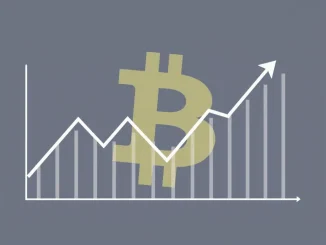
Are you feeling a tremor in the financial markets? Today, the U.S. stock market painted a sea of red as major indices closed lower. For cryptocurrency enthusiasts who keep a close watch on traditional markets, this dip might be more than just numbers – it’s a signal. Let’s break down what happened and what it could mean for your investment strategy.
Decoding the US Stock Market Decline: A Snapshot of Today’s Trading
The closing bell has rung, and the numbers are in. Across the board, major U.S. stock indices experienced a downturn. Here’s a quick glance at the closing figures:
| Index | Change |
|---|---|
| S&P 500 | -0.33% |
| NASDAQ | -0.53% |
| Dow Jones Industrial Average | -0.37% |
While these percentages might seem small at first glance, they represent a collective shift in market sentiment and investor behavior. But what’s behind this market downturn?
Navigating the Market Downturn: Unpacking the Reasons Behind the Dip
Market fluctuations are a constant, and pinpointing the exact cause for a single day’s decline can be complex. However, several factors often contribute to such market behavior. Let’s consider some potential drivers:
- Economic Data Releases: Recent economic reports, such as inflation figures, employment data, or consumer spending, can heavily influence market direction. If the data suggests a slowing economy or persistent inflation, investors might become cautious, leading to sell-offs.
- Interest Rate Concerns: Anticipation or announcements regarding interest rate hikes or future monetary policy by the Federal Reserve can create uncertainty. Higher interest rates can make borrowing more expensive, potentially dampening economic growth and corporate profits, which often negatively impacts stock prices.
- Geopolitical Events: Global events, ranging from political instability to international trade tensions, can inject volatility into the markets. Uncertainty on the global stage often translates to risk aversion among investors.
- Corporate Earnings Outlook: While not explicitly mentioned in the initial context, the overall outlook on corporate earnings plays a crucial role. If investors anticipate weaker earnings reports in the future, they might adjust their portfolios accordingly, leading to downward pressure on stock prices.
It’s important to remember that these are just potential factors, and the actual reasons behind today’s market downturn could be a combination of these or other unforeseen elements. For crypto investors, understanding these traditional market dynamics is increasingly relevant as correlations between crypto and stock markets have been observed.
Understanding Investment Risk in a Declining Market: What Does it Mean for You?
A declining stock market inherently brings increased investment risk. Here’s what investors should consider during such times:
- Portfolio Volatility: Market downturns amplify portfolio volatility. Assets across various sectors might experience price declines, impacting overall portfolio value.
- Emotional Investing: Fear and panic can drive emotional investment decisions. It’s crucial to avoid impulsive selling during market dips, as this can lock in losses. A well-defined investment strategy and a long-term perspective are vital.
- Opportunity for Strategic Rebalancing: Market declines can present opportunities for strategic portfolio rebalancing. Investors can reassess their asset allocation and potentially buy into assets at lower prices, positioning themselves for future recovery.
- Risk Assessment: Downturns are a good time to reassess your risk tolerance and ensure your portfolio aligns with your financial goals and risk appetite.
For those involved in the cryptocurrency space, understanding investment risk in traditional markets provides valuable context. While crypto operates in its own ecosystem, broader market sentiment and economic conditions can influence crypto asset values as well.
Analyzing Market Trends: Spotting Patterns and Preparing for What’s Next
Today’s stock market performance is a single data point, but it’s part of broader market trends. Analyzing these trends can offer insights into potential future market movements:
- Trend Identification: Is this a short-term correction within a larger uptrend, or does it signal the beginning of a more sustained downtrend? Analyzing historical data and technical indicators can help identify prevailing trends.
- Sector Performance: Examining which sectors are leading the decline and which are showing relative resilience can provide clues about underlying market concerns and potential future opportunities.
- Global Market Comparison: Comparing the U.S. market performance with global indices can offer a broader perspective on whether this is a localized event or a more widespread global trend.
- News and Sentiment Analysis: Keeping an eye on financial news, analyst opinions, and overall market sentiment can help gauge the prevailing mood and potential future direction.
By actively analyzing market trends, both stock and crypto investors can make more informed decisions and better navigate market fluctuations. Understanding these patterns is key to long-term investment success.
Economic Uncertainty: The Cloud Overhanging the Markets
The current market climate is heavily influenced by economic uncertainty. Several factors contribute to this atmosphere:
- Inflationary Pressures: Persistent inflation remains a significant concern globally. Central banks are grappling with how to manage inflation without triggering a recession.
- Global Growth Concerns: Slowing economic growth in major economies, coupled with geopolitical risks, contributes to overall economic uncertainty.
- Supply Chain Disruptions: Ongoing supply chain issues can impact corporate profitability and contribute to inflationary pressures, further fueling uncertainty.
- Policy Uncertainty: Changes in government policies, both fiscal and monetary, can create uncertainty and impact market direction.
This economic uncertainty is not confined to the stock market; it permeates all asset classes, including cryptocurrencies. Investors need to be prepared for continued volatility and adapt their strategies accordingly.
Concluding Thoughts: Navigating Market Volatility with Knowledge and Strategy
Today’s U.S. stock market decline serves as a reminder of the inherent volatility in financial markets. For investors, whether in traditional stocks or cryptocurrencies, staying informed, understanding market dynamics, and maintaining a disciplined investment approach are crucial.
While market downturns can be unsettling, they also present opportunities. By focusing on long-term goals, managing risk effectively, and leveraging market knowledge, investors can navigate these times and position themselves for future financial success. Keep a close watch on market trends, stay informed about economic indicators, and remember that informed decisions are your best defense in uncertain times.



